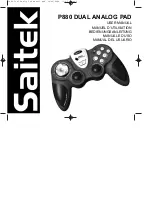
Wiring inputs and outputs
TruVu™ VVTZC
-E2
©2022 Carrier.
Installation and Start-up Guide
All rights reserved.
61
Demand control ventilation (DCV) and dehumidification using optional sensors
The TV-VVTZC-
E2’s
IN-01
input supports an optional CO2 sensor or Relative Humidity (RH) sensor. The sensor can
have a 5-volt maximum output. The range is configurable as either 0
–
5 or 1
–
5 volts (1
–
5 volt supports 4
–
20 mA
sensors with a 250 ohm resistor). The controller's low and high sensor input configuration allows for a wide range
of sensors.
You can also connect ZS Sensors with CO
2
and/or RH to the TV-VVTZC-
E2’s
Rnet
. If you have more than one
sensor, the controller determines DCV and dehumidification based on the highest sensor value and not the
average. You can adjust this in the i-Vu application or Field Assistant.
The controller can also support both DCV and dehumidification functions by using a system RH or CO
2
sensor
input connected to another controller.
NOTE
If the connected sensor and/or system sensor value are to be used by the air source through Linkage, set
the appropriate control type to
Enable
. If you do not need local control at the zone, set
DCV Max Vent Airflow
or
Maximum RH Override Airflow
to 0.
Demand Control Ventilation (DCV)
–
Requires CO2 sensor
The zone controller monitors the CO2 sensor and can override the temperature control to respond to increasing
CO2 levels when the zone is occupied. If the sensor’s value remains below th
e
DCV Start Ctrl Setpoint
, the
Occupied Min Airflow
setpoint provides the base ventilation rate as defined by ASHRAE. As the CO2 level exceeds
the
DCV Start Ctrl Setpoint
and the air source is in cooling or ventilation mode, the controller increases airflow to
the zone starting at the
Occupied Min Airflow
and then proportionally increases ventilation as the CO2 level
increases. If the sensor's value exceeds the
DCV Max Ctrl Setpoint
, the controller maintains the
DCV Max Vent
Airflow
until the zone's CO2 level decreases.
When the zone is unoccupied, the
Unoccupied Min Airflow
provides the base ventilation as required.
If the controller is configured for auxiliary heat, the controller will maintain the zone's temperature at a heating
setpoint that is temporarily increased to a value halfway between the heating and cooling setpoints when DCV is
active. This prevents an excessive drop in zone temperature caused by the additional ventilation. If auxiliary heat
is not available, the
DCV Max Vent Airflow
setpoint should be readjusted to prevent overcooling or set to 0 to
disable DCV at the zone.
Dehumidification
–
Requires RH sensor
The zone controller monitors the RH sensor and can provide dehumidification if the sensor's value exceeds the
Occupied RH Control Setpoint
and the zone is occupied. If the zone is occupied, does not require heating, and the
air source is operating in a cooling mode, the controller will override the temperature control to increase airflow to
the zone. The primary air must have a sufficiently low dew point for dehumidification to function properly. During
the dehumidification mode, the heating setpoint is temporarily increased to a value halfway between the heating
and cooling setpoints to prevent overcooling in the zone. The controller uses a PID control loop to provide
dehumidification. If auxiliary heat is not available, the
Maximum RH Override Airflow
should be readjusted to
prevent overcooling or set to 0 to disable Dehumidification at the zone.
NOTE
If both control functions are enabled, the zone will control to the greatest calculated minimum cfm
(liters/second) airflow value of the three functions (temperature, RH, or IAQ).
















































